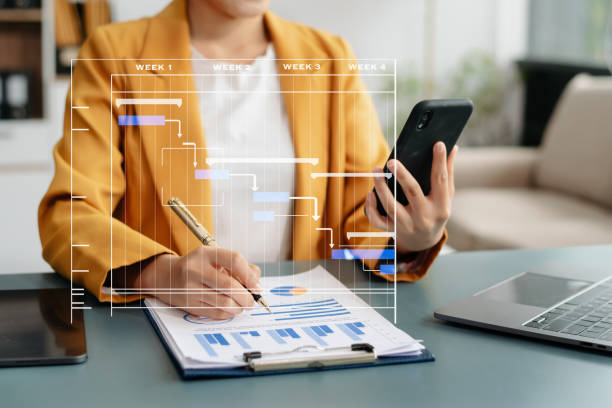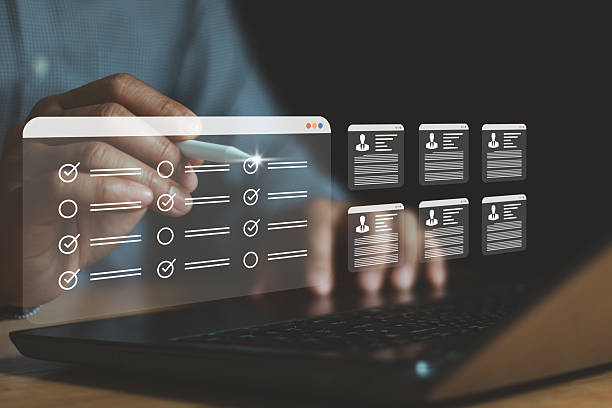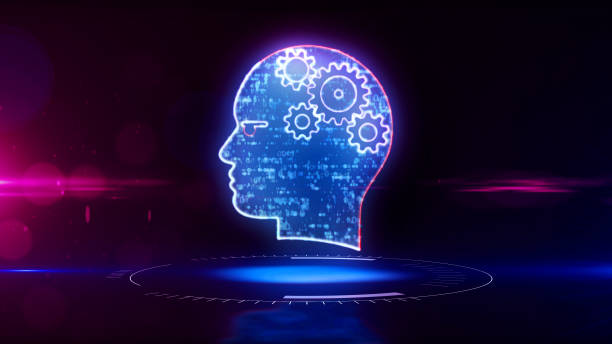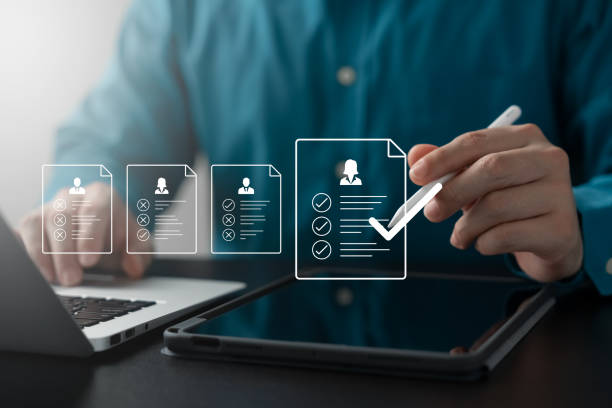What is On-Page SEO and Why is it Important?
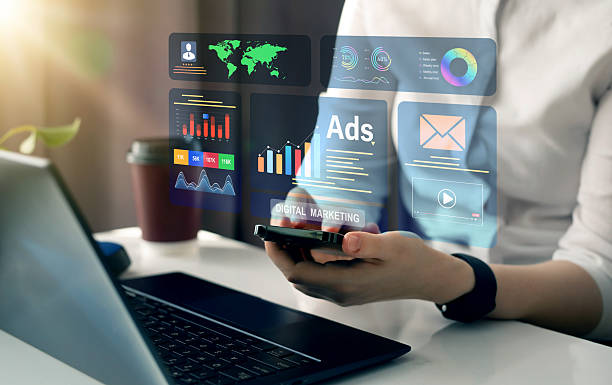
On-Page SEO refers to the set of actions we take within our website to improve the site’s ranking in search engines like Google.
These actions include optimizing content, site structure, HTML tags, and other internal elements of the site.
The importance of On-Page SEO lies in the fact that it helps search engines better understand your site’s content and relate it to users’ search queries.
Without proper On-Page SEO, even with the best content, your site may not be visible in search results.
#On_Page_SEO, as a fundamental pillar in the SEO strategy, plays a vital role in attracting organic traffic and increasing conversion rates. In fact, On-Page SEO complements Off-Page SEO, and together they can help improve your site’s ranking.
On-Page SEO allows you to have more control over your site’s ranking.
Optimizing various elements of On-Page SEO, such as title tags, meta descriptions, and URL structure, provides search engines with clues about what the page’s content is about.
This information helps search engines properly index and rank web pages.
A strong On-Page SEO strategy can help you rank higher in search results for keywords related to your business and attract more traffic to your site.
Moz is a good resource for learning SEO.
Also, On-Page SEO improves user experience.
Optimizing site speed, creating easy navigation, and providing quality content can increase user satisfaction and reduce the bounce rate.
Tired of losing customers due to poor e-commerce website design? With Rasaweb, solve this problem once and for all!
✅ Increase sales and the conversion rate of visitors to customers
✅ Smooth and attractive user experience for your customers⚡ Get a free consultation
Keyword Research; The First Step in On-Page SEO
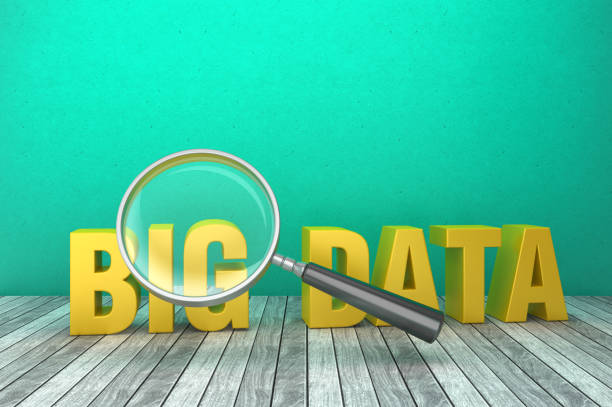
Keyword research is the foundation of any successful On-Page SEO strategy.
Identifying the keywords that your target audience searches for helps you optimize your content around these keywords and attract more organic traffic to your site.
There are various tools available for keyword research, including Ahrefs, Ubersuggest, and Google Keyword Planner.
These tools provide you with information about search volume, competition, and related keywords.
When doing keyword research, look for long-tail keywords.
These keywords usually have lower search volume, but they also have less competition and can attract more targeted traffic to your site.
For example, instead of the keyword “sports shoes,” use the keyword “best sports shoes for outdoor running.”
After identifying the right keywords, you should use them naturally in your content.
Avoid filling content with keywords, as this can lead to your site being penalized by search engines.
Instead, try to use keywords naturally in headings, subheadings, body text, and image tags.
On-Page SEO has a significant impact on click-through rates.
Optimizing Titles and Meta Descriptions
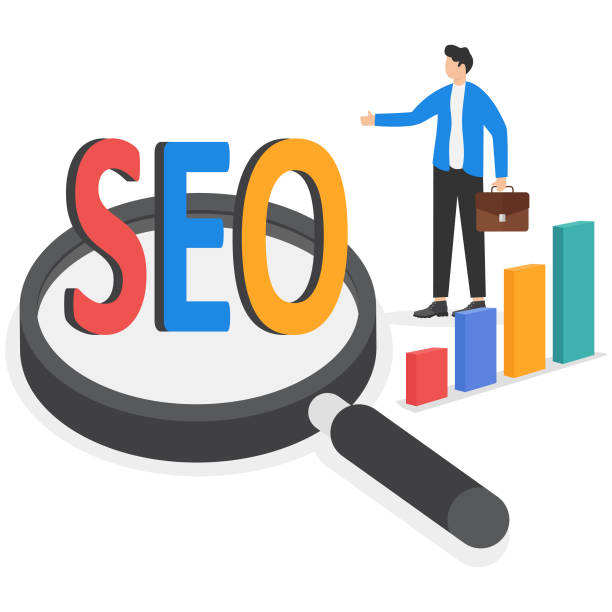
Title tags and meta descriptions are important elements in On-Page SEO that help search engines and users understand what your page is about.
The page title is displayed in search results and should be attractive and relevant to the page’s content.
The meta description is also a summary of the page’s content and is displayed below the title in search results.
A good title and meta description can increase your click-through rate (CTR) and attract more traffic to your site.
Optimizing On-Page SEO is very important for search engines.
When writing titles and meta descriptions, pay attention to the following:
- Use your main keywords in the title and meta description.
- Titles should be a maximum of 60 characters and meta descriptions should be a maximum of 160 characters.
- Titles and meta descriptions should be attractive and relevant to the page’s content.
- Use unique titles and meta descriptions for each page.
Properly optimizing titles and meta descriptions improves On-Page SEO. Here is a table to better understand title and meta description optimization:
| Feature | Description |
|---|---|
| Title Length | Maximum 60 characters |
| Meta Description Length | Maximum 160 characters |
| Keywords | Use main keywords naturally |
| Attractiveness | Attract the audience and encourage clicks |
| Uniqueness | The title and meta description for each page should be unique |
Optimizing URL Structure
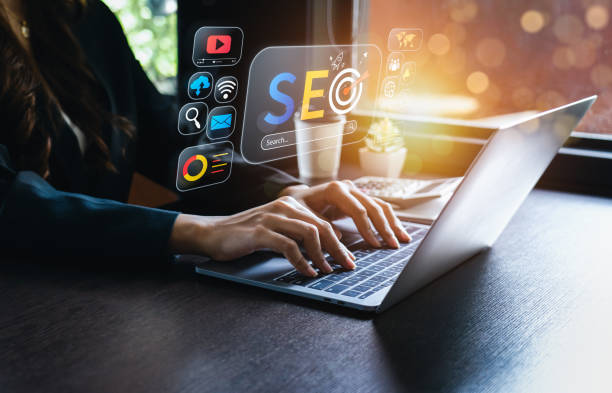
The structure of your site’s URLs can also affect On-Page SEO.
Short, descriptive URLs containing keywords can help search engines understand what your page is about and help users easily find the page they are looking for.
To #optimize URL structure, pay attention to the following:
- Use short and descriptive URLs.
- Use your main keywords in the URL.
- Use hyphens (-) to separate words in the URL.
- Use lowercase letters in the URL.
- Avoid creating complex and lengthy URLs.
For example, instead of the URL “example.com/page?id=123”, use the URL “example.com/seo-internal-guide”.
Proper URL structure is an important aspect of On-Page SEO.
Does your current company website not reflect your brand’s credibility and power as it should? Rasaweb solves this challenge for you by designing a professional corporate website.
✅ Increase the credibility and trust of visitors
✅ Attract more targeted customers
⚡ Click to receive a free consultation!
Content Optimization

Content is the king of On-Page SEO.
Providing quality, relevant, and valuable content to users is the most important factor in improving your site’s ranking in search engines.
Your content should answer users’ questions, meet their needs, and encourage them to interact with your site.
To optimize content, pay attention to the following:
- Create high-quality and unique content.
- Optimize your content for your main keywords.
- Use headings and subheadings to organize your content.
- Use images, videos, and other multimedia elements to make your content more engaging.
- Update your content regularly.
When writing content, pay attention to the user’s intent.
In other words, try to understand what the user is looking for by searching for a specific keyword.
Then, create content that fully meets the user’s needs.
Proper On-Page SEO makes your content more visible.
Image Optimization
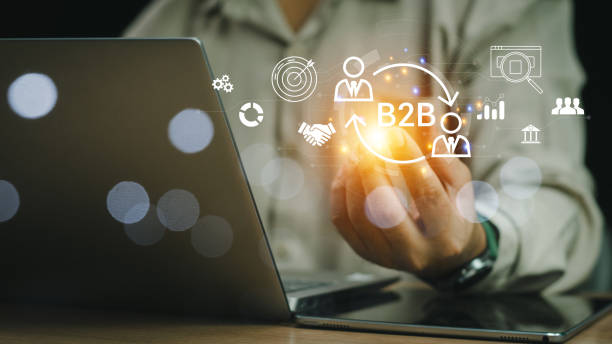
Images can also play an important role in On-Page SEO.
Optimizing images can help improve your site’s speed, attract more traffic from image search, and improve user experience.
To optimize images, pay attention to the following:
- Use high-quality images.
- Reduce the file size of images.
- Use alt text for images.
- Use descriptive filenames for images.
Alt text is a short description of the image that is displayed if the image fails to load.
Alt text also helps search engines understand what the image is about.
When writing alt text, try to accurately describe the image and use relevant keywords.
On-Page SEO is not complete without image optimization.
Site Speed Optimization

Site speed is an important ranking factor in Google.
Users who wait for pages to load for a long time are likely to leave the site and go to another site.
Optimizing site speed can help improve user experience, reduce bounce rate, and increase your site’s ranking.
On-Page SEO helps you have a faster site.
To optimize site speed, you can take the following actions:
- Use fast hosting.
- Use a Content Delivery Network (CDN).
- Reduce the file size of images.
- Use Gzip compression.
- Optimize your HTML, CSS, and JavaScript code.
- Use caching.
Site speed has a significant impact on On-Page SEO and should be given special attention.
Here is a table to better understand site speed optimization:
| Method | Description |
|---|---|
| Using Fast Hosting | Choosing a hosting provider with strong and responsive servers |
| Using CDN | Distributing content across different servers to reduce loading time |
| Optimizing Images | Reducing image size without losing quality |
| Gzip Compression | Reducing the size of web files for faster transfer |
| Code Optimization | Removing extra code and optimizing code for faster loading |
| Using Cache | Temporarily storing data for faster access |
Using Internal Links

Internal links are links that connect different pages of your site to each other.
Using internal links can help search engines better understand your site’s structure, distribute traffic between different pages of your site, and improve the ranking of important pages on your site.
To use internal links, pay attention to the following:
- Use relevant internal links.
- Use descriptive anchor text for internal links.
- Use internal links naturally in your content.
- Avoid creating long chains of internal links.
Anchor text is the text that links to another page.
When writing anchor text, try to use keywords related to the destination page.
Internal linking is a key pillar of On-Page SEO.
Are you tired of your online store having visitors but no sales? Rasaweb solves your main problem with professional e-commerce website design!
✅ Significant increase in sales with targeted design
✅ Flawless user experience for your customers
⚡ Get a free consultation!
Mobile Optimization
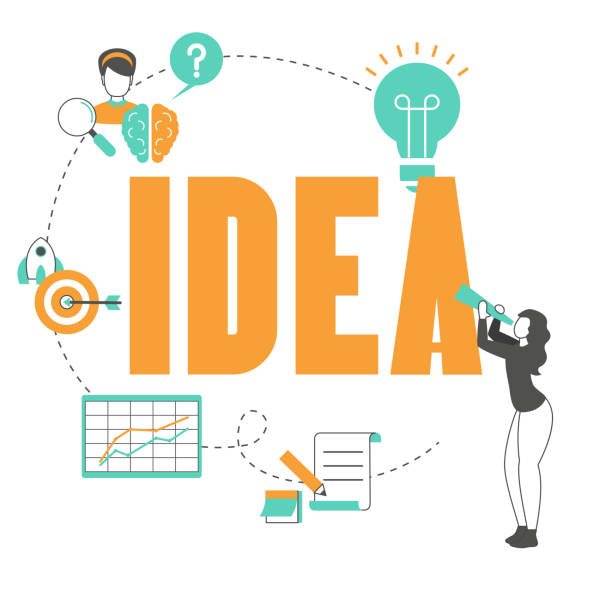
Today, most users access the internet through mobile devices.
Optimizing your site for mobile not only improves the user experience, but can also affect your site’s ranking in search engines.
Google prioritizes sites that are optimized for mobile in search results.
On-Page SEO for mobile sites is very important.
To optimize your site for mobile, you can take the following actions:
- Use a responsive design.
- Optimize your site’s speed on mobile devices.
- Use readable and large fonts on mobile devices.
- Use large buttons and links for ease of use on mobile devices.
- Use mobile-friendly content.
Responsive design means that your site automatically adapts to the screen size of the user’s device.
Having a responsive site is an important principle of On-Page SEO.
Monitoring and Analyzing On-Page SEO Results

On-Page SEO is an ongoing process that requires monitoring and analysis.
You should regularly check your site’s performance and make the necessary changes to improve your site’s ranking.
There are various tools available for monitoring and analyzing On-Page SEO, including Google Analytics, Google Search Console, and Ahrefs.
Using these tools, you can get information about your site’s traffic, the keywords that users use to reach your site, bounce rate, and other key performance indicators (KPIs).
By analyzing this information, you can identify the strengths and weaknesses of your On-Page SEO strategy and make the necessary changes to improve your site’s performance.
For example, if you find that your site’s traffic from a specific keyword has decreased, you can optimize your content for that keyword.
Or, if you find that your site’s bounce rate is high, you can improve your site’s user experience.
Monitoring On-Page SEO and analyzing results is very important.
Frequently Asked Questions
| Question | Answer |
|---|---|
| What is On-Page SEO? | It refers to the set of actions taken within a website to improve ranking in search engines. |
| Why is On-Page SEO important? | Because it helps search engines better understand the content and structure of your site and improves the user experience. |
| What are the most important elements of On-Page SEO? | Title and meta descriptions, keywords, URL structure, quality content, image optimization, internal linking, and site speed. |
| How to optimize the Title Tag and Meta Description? | The title should include the main keyword and be attractive, and the meta description should be a persuasive summary of the content with relevant keywords. |
| What is the role of keywords in On-Page SEO? | Keywords help search engines understand what the page’s content is about and should be used naturally and intelligently in the text. |
| How is image optimization done for On-Page SEO? | By compressing the size, using a descriptive filename, and filling the Alt tag with relevant descriptions and keywords. |
| What is Internal Linking and what is its application? | Connecting different pages of the site to each other. This helps to distribute page authority and improve search engine crawling. |
| What is the importance of site loading speed in On-Page SEO? | High speed improves user experience and is an important ranking factor for search engines like Google. |
| What is the impact of site Mobile-Friendliness on On-Page SEO? | Given the increase in mobile users, being responsive is essential to provide a good user experience on all devices and prioritize Google’s mobile index. |
| What are the important factors related to content in On-Page SEO? | Originality, quality, comprehensiveness, readability, proper use of headings (H1, H2,…), and regular content updates. |
And other services of Rasa Web advertising agency in the field of advertising
Intelligent UI/UX: A fast and efficient solution to attract customers by focusing on attractive user interface design.
Intelligent Marketing Automation: A dedicated service for growing digital branding based on optimizing key pages.
Intelligent Marketing Automation: A combination of creativity and technology to increase sales through marketing automation.
Intelligent Google Ads: A combination of creativity and technology to increase sales through proprietary programming.
Intelligent Digital Branding: Designed for businesses looking to increase click-through rates through marketing automation.
And over hundreds of other services in the field of internet advertising, advertising consulting and organizational solutions
Internet Advertising | Advertising Strategy | Advertorials
Resources
What is On-Page SEO?
,What is On-Page SEO and how does it work?
,What is On-Page SEO? Comprehensive On-Page SEO Training
,What is On-Page SEO? (+On-Page SEO Checklist)
? Are you ready to take your business to the top in the digital world? Rasaweb Afarin Digital Marketing Agency, with years of experience and a specialized team, provides comprehensive and result-oriented solutions for the growth and visibility of your brand. From responsive website design and SEO to social media management and targeted advertising campaigns, we are by your side every step of the way to turn your digital dreams into reality. With Rasaweb Afarin, the bright future of your business begins today.
📍 Tehran, Mirdamad Street, next to the Central Bank, South Kazeroun Alley, Ramin Alley, No. 6

